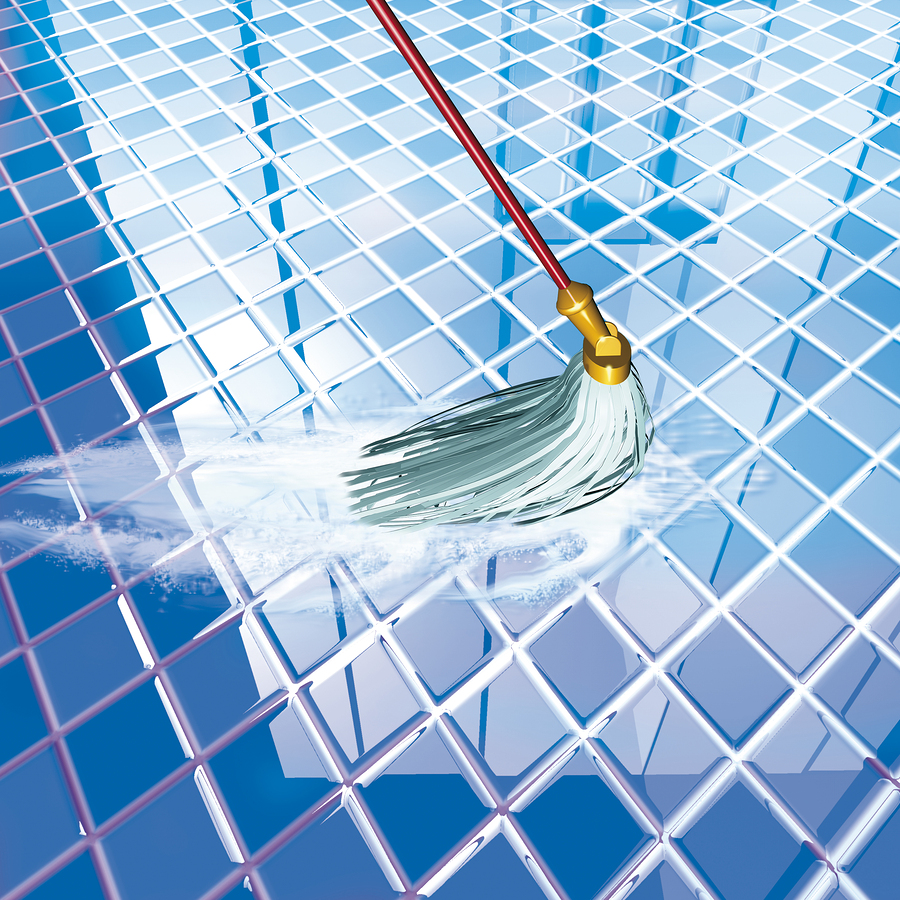Mopping the floor. This basic act must be performed regularly in any business. Not only does it keep the floor looking tidy, but the proper cleaning system will keep your flooring looking new longer. The key is to use the best treatment with the best cleaning method for your floor material.
What Kind of Equipment for Which Kind of Flooring?
Tile and grout flooring is generally thought to be the most resilient. Use bleach-based cleansers with a mop with some stiffness to it. You may decide to use a floor squeegee as well.
Linoleum flooring cannot handle abrasive cleaners. Use a gentle soap and a softer mop. Natural stone such as marble or fired clay flooring can be cleaned with the same cleansers.
Laminated wood must be dry mopped with a gentle cleanser. Some prefer to use a glass cleaner for a high shine. Natural wooden floors like an oil based gentle cleanser with a soft damp mop.
What To Avoid
Never use extremely hot water on wooden or laminated floors. It can warp these natural materials. Laminate may also be damaged by ammonia products. Do not use a beater brush vacuum on tile or grout. Avoid heavily waxed products on all floor types for every day use. It builds up and dulls the floor.
Laminate, wood, and linoleum are all prone to micro-scratching if rough cleansers or mops are used. Always be sure to check your mop for rough edges or embedded debris that could damage the floor.
The Differences between Types of Mopping
A dry mopping is performed with a special dry mop head. It is basically a rough dishcloth on a pole. It picks up dust and hair that is often missed by a broom.
A damp mop is a regular mop that has been wrung out until it is barely wet to the touch. It is a very effective yet gentle way to clean. This is different then regular moping. That uses a mop that has been wrung out but still feels wet.
A wet mopping uses a mop that has not been wrung out. Most of the time you will not need to wet mop.
Proper Technique for a Clean Floor
The first steps in a cleanly mopped floor are the same for all floor types. Completely sweep the floor to be mopped. Remove all loose rugs, lay them to the side. Measure out your cleaner and pour it into warm or cool water. Insert mop into water and follow directions for your particular floor.
Wood and laminate floors require a barely damp mop. Stand in one location and work the mop in swirls around you. Dip and ring the mop often to keep the mop head as clean as possible. You may need to change the water often.
Tile and grout floors will need a damp or regular mopping job. These floors are prone to gunk collecting in crevices. You may need to use a stiff nylon brush to scrub away the grunge. Natural stone floors are absorbent. They will generally be fine with a regular mopping. From time to time a wet mopping with a degreaser cleaner will be useful.
Clean floors keep your establishment looking good and smelling fresh. Proper mopping technique with the right solutions make the job more effective and less tedious.

